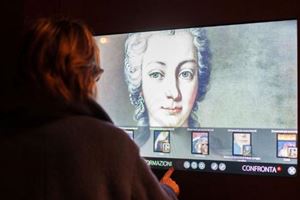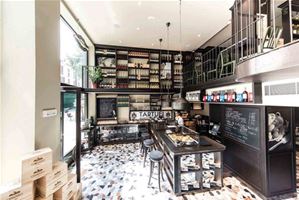The 500-year-old mystery may soon be solved.
The results of recent testing on the eastern wall of the Salone de’ Cinquecento seem to support the theory that Leonardo da Vinci’s fabled painting, Battle of Anghiari, is indeed located in the exact place Dr. Maurizio Seracini had been looking for over 30 years.
A group of art historians led by Seracini (see TF 43), have been on a decades-long quest to find Leonardo’s long-lost painting, heralded as Leonardo’s greatest work and commended as a ‘school for the world.’
Seracini began his quest in the 1970s, when he saw the words Cerca Trova (‘seek and you shall find’) in Vasari’s enormous Battle of Marciano, on the eastern wall of the Salone de’ Cinquecento. After reading the message, he began to suspect the mural’s existence, believing it might have been left as a clue to the place where Vasari sealed in Leonardo’s work.
According to historical documentation, Leonardo started painting the Battle of Anghiari in 1504 but abandoned the project. In 1563, Vasari allegedly covered it up in the process of completing the larger mural. Seracini has always believed Vasari hid Leonardo’s painting behind his work on the eastern wall, not the west, as other art historians have suggested.
The first round of scientific testing was conducted from September to December 2011, during which Seracini and his team used high-tech equipment. Through six small holes drilled in already damaged areas of the Battle of Marciano, endoscopic probes fitted with miniature cameras were inserted to capture images and collect samples from the surface behind the mural.
On March 12, Seracini presented the preliminary results, confirming what he has been arguing for decades: there is something behind the eastern wall. The results also confirm the existence of a gap behind the Vasari, which previous radar scans had suggested.
Moreover, a chemical analysis of the material collected behind the wall revealed traces of the same black organic pigment that Leonardo used to paint the Mona Lisa and St. John the Baptist. Traces of other pigments were found, one beige and the second red, a colour that would not normally be found in common building plaster. However, researchers cannot yet determine whether the painting is intact behind the wall or if only fragments remain.
The testing, conducted with experts from the Opificio delle Pietre Dure, had the backing of both the City of Florence and the Soprindendenza Speciale per il Patrimonio Storico, Artistico ed Etnoantropologico e per il Polo Museale della città di Firenze.
In addition, National Geographic provided financial support to the project, documenting it throughout the testing. On March 18, National Geographic will air the premiere of a documentary, Finding the Lost da Vinci [sic]; the Italian premiere is scheduled for March 20 at 9pm on National Geographic Channel HD (Sky, channel 403). Voyager will also broadcast a documentary on March 19 at 9pm on Rai Due.
For videos and more details on the project, see www.nationalgeographic.com/anghiari.







